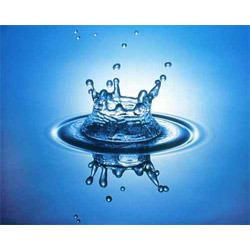In Australia, communities at the suburb level have the power to decide whether to fluoridate water or not.
 Every time I go to the dentist, he tells me the same story: I can tell where you’re from by your teeth, no fluoride means more business for me.
Every time I go to the dentist, he tells me the same story: I can tell where you’re from by your teeth, no fluoride means more business for me.
In an America dominated by indulgence, privilege and the nonsensical, raw water is a thing.
Nellie Bowles of the New York Times writes at Rainbow Grocery, a cooperative in Culver, Oregon, one brand of water is so popular that it’s often out of stock. But one recent evening, there was a glittering rack of it: glass orbs containing 2.5 gallons of what is billed as “raw water” — unfiltered, untreated, unsterilized spring water, $36.99 each and $14.99 per refill, bottled and marketed by a small company called Live Water.
“It has a vaguely mild sweetness, a nice smooth mouth feel, nothing that overwhelms the flavor profile,” said Kevin Freeman, a shift manager at the store. “Bottled water’s controversial. We’ve curtailed our water selection. But this is totally outside that whole realm.”
Here on the West Coast and in other pockets around the country, many people are looking to get off the water grid.
Start-ups like Live Water in Oregon and Tourmaline Spring in Maine have emerged in the last few years to deliver untreated water on demand. An Arizona company, Zero Mass Water, which installs systems allowing people to collect water directly from the atmosphere around their homes, began taking orders in November from across the United States. It has raised $24 million in venture capital.
And Liquid Eden, a water store that opened in San Diego three years ago, offers a variety of options, including fluoride-free, chlorine-free and a “mineral electrolyte alkaline” drinking water that goes for $2.50 a gallon.
What adherents share is a wariness of tap water, particularly the fluoride added to it and the lead pipes that some of it passes through. They contend that the wrong kind of filtration removes beneficial minerals. Even traditional bottled spring water is treated with ultraviolet light or ozone gas and passed through filters to remove algae. That, they say, kills healthful bacteria — “probiotics” in raw-water parlance.
The quest for pure water is hardly new; people have been drinking from natural springs and collecting rainwater from time immemorial. The crusade against adding fluoride to public water began in the 1950s among Americans who saw danger in the protective measures that had been adopted over decades to protect the populace from disease and contamination.
But the off-grid water movement has become more than the fringe phenomenon it once was, with sophisticated marketing, cultural cachet, millions of dollars in funding and influential supporters from Silicon Valley.
